Indian Armed Forces
In addition to the Armed Forces themselves, India has a variety of paramilitaries, in which about 1,1 million people serve: national security forces, special border forces, special paramilitary forces. According to 2015 year, the population of India is 1 billion 276 million people (2-i in the world population, after China). At the same time, the mobilization resources of the country are estimated to be at least 270 million people, of which 160 million are fully fit for military service.
The armed forces of India are designed to organize the defense of the Republic, protect the freedom and independence of the country, it is one of the most important instruments of political power. The personnel of the Indian armed forces have a high level of moral, psychological and combat training and are serving on a contract basis, there is no mandatory call-up for military service in India. For India, due to the huge population and the difficult ethno-confessional situation, recruiting the armed forces for conscription is simply not possible.
Speaking about the armed forces of India, it can be noted that they are relatively young. Armed forces of the independent Republic of India appeared only in 1947 year. At the same time, they were formed on the basis of military contingents, which were ceded to the country when it was divided into two British dominions - the Indian Union and Pakistan. At the same time, the Indian armed forces included units with personnel professing Hinduism and other religions with the exception of Islam, and included Muslim soldiers into the Pakistani army. The official date for the formation of the national armed forces of India is 15 August 1949.
A feature of the Indian armed forces is a very close cooperation with the Russian defense industry. The Indian army is armed with a huge amount of military equipment and weapons models produced by the Soviet Union and Russia. For example, the largest park in the world tanks T-90 possesses not Russia at all, but India. At the same time, both countries are actively cooperating in the military-technical sphere, carrying out joint development of various weapons. Currently, India is the most important importer of Russian weapons, at the same time, the country cooperates quite closely with the UK, France and, more recently, with the USA.
Currently, Russian-Indian cooperation is exclusive. And the point is not that India has been buying weapons in Russia for decades. Delhi and Moscow are working together to create modern weapons systems, and quite unique ones, such as the Bramos rocket, or the 5 generation fighter - the FGFA. It has no analogues in world practice and leasing a nuclear submarine (Russia leased India the Nerpa nuclear submarine for 10 years), the USSR had a similar experience in the 1980 years with the same India.
At the same time, India has its own military-industrial complex, which is able to produce weapons and equipment of all classes, including nuclear weapons and delivery systems. However, this is more in theory, since weapons models created in India, as a rule, have lower tactical and technical characteristics in comparison with foreign analogues, and their development has been carried out for decades. The most obvious example in this regard is the Indian tank Arjun, the development of which lasted for about 37 years. Samples of equipment collected in the country under foreign licenses are not the most reliable. For example, as experts note, a high level of accidents in the Indian Air Force may be associated with this factor. However, despite all of the above, India has everything to become one of the world's major superpowers already in the 21st century.
Indian ground forces
The ground forces of India are the most numerous component of the country's armed forces, they employ at least 1,1 a million people (there are 990 thousands of reservists). The ground forces have the Training Command (headquarters in Simla), as well as the 6 territorial commands - Central, Northern, Western, South-Western, Southern and Eastern. At the same time, the 50 Brigade of the Airborne Forces, two regiments of the PUJAN Agni, one regiment of the Prithvi-1 PU and four regiments armed with the Bramos cruise missiles are under the direct submission of the Indian Ground Forces headquarters.
Indian Ground Forces comprise 12 headquarters of army corps, 36 divisions (18 infantry, 3 armored, 4 quick deployment divisions, 10 mountain infantry and one artillery). In addition, the SV includes 15 separate brigades (5 armored, 7 infantry, two mountain infantry and one paratrooper), as well as 12 air defense brigades, 3 engineering brigades and 22 army helicopter squadrons aviation.
Currently, India has a rather impressive tank fleet, which is mainly equipped with modern machines. 124 tank of its own design "Arjun" was delivered to the army, 124 is planned to be delivered, while work is underway on an upgraded version of "Arjun-2". Also in the army there are 1250 modern Russian MBT T-90, it is planned to produce 750 data of tanks under license. Also available to 2400 Soviet MBT T-72M, which have been or are being upgraded. In addition, up to 1100 of old Vijayan tanks of own production (British Vikkers Mk1) and up to 700 Soviet T-55 tanks are in storage.
Unlike tanks with the rest of the weapons, everything is much worse. Basically, the fleet of other Indian armored vehicles is obsolete. The country has about 100 BRDM-2, roughly 1200 BMP-2 and up to 300 various BTR. Currently, the BMP-2 fleet is being upgraded. In the 2006, the 123 vehicle was converted into the BMP-2K variant, armored vehicles are assembled under a Russian license in India, while the Indian Defense Ministry plans to purchase another 149 BMP-2К.
Obsolete is also the majority of Indian artillery. The troops have up to 100 ACS "Catapult" of its own design - 130-mm howitzer M-46 on the chassis of the tank "Vijayanta", about 80 of such machines is in storage. Also available is the 110 Soviet 122-mm SAU 2C1 “Carnation” and the 80 English 105-mm SAU “Abbot”. It is curious that in September, 2015, India held a tender for the purchase of 155-mm ACS, which was won by the South Korean artillery system K9 Thunder, which bypassed the Russian ACS Msta-S. This South Korean SAU definitely enjoys success in the international market, it was also chosen as the main one in the Turkish armed forces. K9 Thunder production of ACS will be deployed in India, it is reported that the armed forces will purchase at least 500 of such ACS.
In addition, about 4,3 thousands of towed guns of various calibers are in service, more than 3-x thousand stored and about 7 thousands of mortars. There are practically no modern samples among them either. With 2010, India has been trying to buy 145 X-NUMX-mm M-155 howitzers from the US, the deal has been under discussion for 777 years, but it looks like in May 5 has moved off the ground and howitzers will be delivered to the country.
The situation with the MLRS is similar in terms of the availability of new samples. In India, there are about 150 Soviet BM-21 “Grad” (122 mm), 80 MLRS of its own design “Pinaka” (214 mm) and 62 Russian Smerch system (300 mm). At the same time, Pinaka and Smerch can be attributed to modern multiple launch rocket systems.
Also, the ground forces have about 250 Russian-made Kornet 13, 2 self-propelled Namika ATGM (Indian Nag-based ATGM on BMP-XNUMX chassis), in addition there are several thousand Soviet and Russian Malyutka and Fagot ATGMs , "Competition", "Storm", the French ATGM "Milan".
Soviet / Russian Strela-10 (250), Wasp (80), Tunguska (184), Shilka (75) and Indian short-range Akash (300) air defense systems form the basis of army air defense. Army aviation has about 300 helicopters, almost all of Indian production.
Air Force of India
According to the number of aircraft, the Indian Air Force is in fourth place in the world, behind the United States, Russia and China. In this case, the Air Force has about 1800 aircraft of all types, including about 900 combat vehicles. The Indian Air Force is serving about 150 thousand people. Organizationally, they are an integral part of the united type of armed forces - the Air Force and the Air Defense. The country's air forces have 38 aviation wing headquarters and 47 squadrons of combat aviation, the country has a development of a network of airfields.
The headquarters of the Indian Air Force consists of the following departments: operational planning, reconnaissance, combat training, EW, meteorological, financial and communications. The 5 aviation commands and one training center (headquarters in Bangalore) are also subordinate to the headquarters, which manage the air forces in the field: Central (Allahabad), West (Delhi), East (Shillong), South (Trivandrum) and South-West (Gandinagar).
A serious problem of the Indian Air Force over the years is the high level of accidents. From the beginning of the 1970-s to the beginning of the 2000-s, the Indian Air Force each year lost an average of 23 aircraft and a helicopter. At the same time, the largest number of flight accidents occurred in the Soviet MiG-21 fighters, which were produced in India, and for a long time formed the basis of its fleet. In the Indian Air Force, these aircraft have earned a reputation as "flying coffins" and "widowers." From 1971 to April 2012 of the year in India, 482 of such fighters crashed (these are more than half of the 872 MiG-21, which were obtained by India). At the same time, at least 150 of such machines remain in the ranks, 120 of which are planned to be operated at least until 2019 of the year.
In general, the basis of the Indian Air Force are airplanes and helicopters of Soviet / Russian production. Attack aircraft was presented by the Soviet MiG-27 (113 machines), most of them were planned to be written off in the 2015 year, and approximately 120 by the English Jaguar fighter-bombers. All of these aircraft were built in India under license and today are obsolete.
Much better is the case with fighter aircraft. As part of the Air Force there are about 220 modern Russian Su-30MKI, their total number will be brought to 272. By the number of Su-30 fighters in the ranks, the Indian Air Force bypasses the Russian Air Force. Also in service is the 62 fighter MiG-29, all of them have been upgraded to the versions of the MiG-29UPG (53) and MiG-29UB-UPG. In addition, there are 50 French fighters "Mirage 2000" and 11 more such training machines. They are planned to be upgraded to the level of “Mirage 2000-5”, which will prolong their operation by another 20 years. In addition, the Indian Air Force begins to receive a fourth-generation lightweight multi-purpose fighter of its own design, HAL Tejas, and 2014 fighters, including prototypes, have been built since 14. In total for the Indian Air Force it is planned to build around 200 of such aircraft, which should completely replace the MiG-21 and MiG-27.
India also has AWACS aircraft, there are three Russian A-50EI and three DRDO AEW & CS aircraft of a joint Indian-Brazilian development. There are also three American Gulfstream-4 electronic reconnaissance aircraft, six Russian Il-78 tanker aircraft, 6 more European Airbus A330 MRTTs will be delivered.
In transport aviation there are 17 Il-76MD, 105 An-32, some of the aircraft from 2009 have been modernized in Ukraine, the rest will be modernized directly in India. At the same time, India plans to replace all Soviet Il-76MD, which have been in operation for more than 28 years, with the newest American transport workers C-17 Globemaster III. In 2010, a contract was signed for the purchase of 10 of such aircraft, with a possible option to buy more 6 machines. The first aircraft was handed over to the Indian Air Force in January 2013.
The Air Force is armed with about 30 combat helicopters, including 24 Russian Mi-35, 4 helicopter of its own production "Rudra" and 2 LCH. In addition, it operates around 360 multi-purpose and transport helicopters, including a large number of Soviet Mi-8 and Russian Mi-17, Mi-17В5, as well as Mi-26.
The Indian Navy
The Indian Navy includes the Navy, Navy, and Special Forces. Currently on navy serves about 58 thousand people, including about 1,2 thousand in the marines and about 5 thousand in naval aviation. More than 180 ships and 200 aircraft are in service. To base the warships of the Indian Navy use the three main naval bases - Kadamba (in the Goa area), Mumbai and Visakhapatnam. At the same time, the Navy includes three commands - Western (Bombay), Southern (Cochin) and Eastern (Visakhapatnam).
The Indian submarine fleet includes one Arihant SSBN with a 12 SLBM K-15 (700 km range), and it is planned to build 3 more submarines of this type. At the same time, the missile launch range is rather modest. Also in leasing is one Russian nuclear submarine "Nerpa" of the 971 project, which received the Indian name "Chakra". In addition, 9 Russian diesel submarines of the 877 “Halibus” project and 4 German submarines of the 209 / 1500 project are in the ranks. 3s of modern French submarines of the Scorpen type are also under construction, with a total of 6 of such submarines planned to be built.
Currently, the Indian fleet has two aircraft carriers - the Viraat (former English Hermes) and the Vikramaditya (former Soviet Admiral Gorshkov). In addition, the construction of two of its own aircraft carriers such as "Vikrant". The naval aviation of India is armed with a 63 decked fighter - the 45 MiG-29K (including the 8 combat-training MiG-29CUB) and the Harrier 18. MiG-29K designed for arming the aircraft carrier "Vikramaditya" (air group - 14-16 MiG-29K and 4 MiG-29KUB to 10 helicopters) and construction of aircraft carriers of the "Vikrant", "Harriers" used to "Viraat".
Anti-submarine aviation is represented by old Soviet Il-38 - 5 airplanes, Tu-142М - 7 airplanes (one in storage) and three modern American P-8I (all were ordered by 12). In addition, the Indian naval aviation has 12 Russian DRLO Ka-31 helicopters, 41 anti-submarine helicopter, including 18 Soviet Ka-28 and 5 Ka-25, as well as 18 English "Sea King" McNNXXB.
The surface forces of the fleet are quite variegated. There are 9 destroyers: 5 type "Rajput" (Soviet project 61), 3 own type "Delhi" and one type "Calcutta" (2-3 destroyer of this type will be built). Also in service is the 6 modern frigates of the Russian construction of the Talvar type (project 11356) and the 3 of even more modern own buildings of the Shivalik type. The Navy has the newest Kamort corvette (to be built from 4 to 12 units), 4 corvettes of the Kora type, 4 of the Hukri type, 4 of the Abhay type (Soviet 1241P project). It is worth noting that all destroyers, frigates and corvettes (except the Abhay) of the Indian fleet are armed with modern Russian and Russian-Indian sea-based cruise missiles and the Caliber, Brahmos, X-35 anti-ship missiles.
Indian nuclear forces
A special structure was created in the structure of the armed forces of India to control the existing nuclear forces - the NCA (Nuclear Command Authority), the Administration of the nuclear command. At the same time, this governing body is not only military, but also military-political. This command deals with issues of nuclear planning in the interests of defense, and is also responsible for making and implementing a decision on the use of nuclear weapons to repel external aggression; the head of command is the country's prime minister.
The body of the military operational-technical administration, directly subordinate to the NCA and the chairman of the committee of the chiefs of staff of the armed forces of India, is the SFC - Strategic Forces Command, the command of the strategic forces, which was created in 2003 year. This command is responsible for coordinating the actions of the nuclear components of the ground forces and the country's air force, represented by parts of the ground forces equipped with ground-based ballistic missiles and air squadrons armed with aircraft carrying nuclear bombs. In the foreseeable future, the SFC will also take control over the naval strategic nuclear forces of India.
Most of the nuclear missile potential of India is concentrated in the ground forces, in which there are two regiments on the 8 PU of Agni medium-range ballistic missiles. In total, presumably, in India there are 80-100 missiles "Agni-1" (700-900 km), up to 20-25 "Agni-2" missiles (2000-3000 km) and a number of ballistic missiles of an increased range of "Agni-3" type 3500 ”(5000-1 km). Also in the only regiment of operational-tactical missiles "Prithvi-150" (12 km) there is an 30 PU for these missiles. All of these missiles can be carriers of both conventional warheads and nuclear ones. Both Russian Su-2000MKI and French Mirage-XNUMX fighters can be carriers of nuclear weapons in the Indian Air Force.
According to experts, today India has a limited stock of nuclear charges, in combat condition - about 30-35 charges. At the same time, there is a certain number of ready-made components in the country for completing new charges. It is believed that, if necessary, quite quickly, India will be able to produce more 50-90 nuclear warheads.
Information sources:
http://rusplt.ru/world/armiya-indii-mejdu-rossiey-i-kitaem-11738.html
http://toparmy.ru/armii-mira/armiya-indii/vvs-indii-voenno-vozdushnye-sily.html
http://nevskii-bastion.ru/armed-forces-of-india
Open source materials
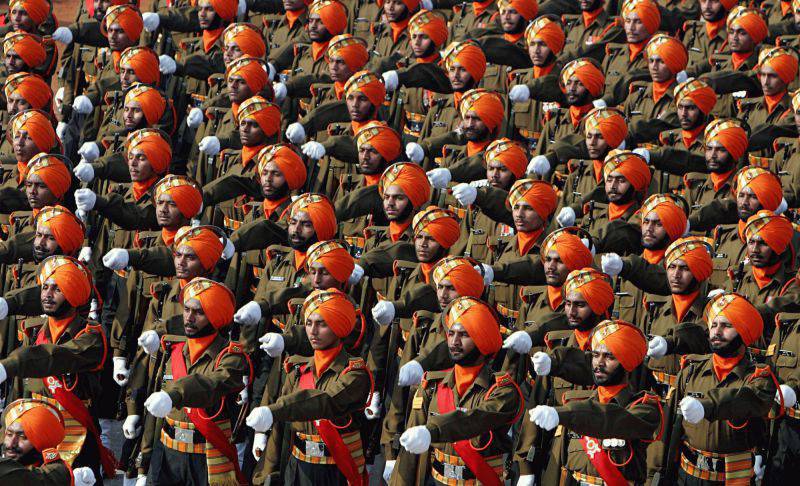
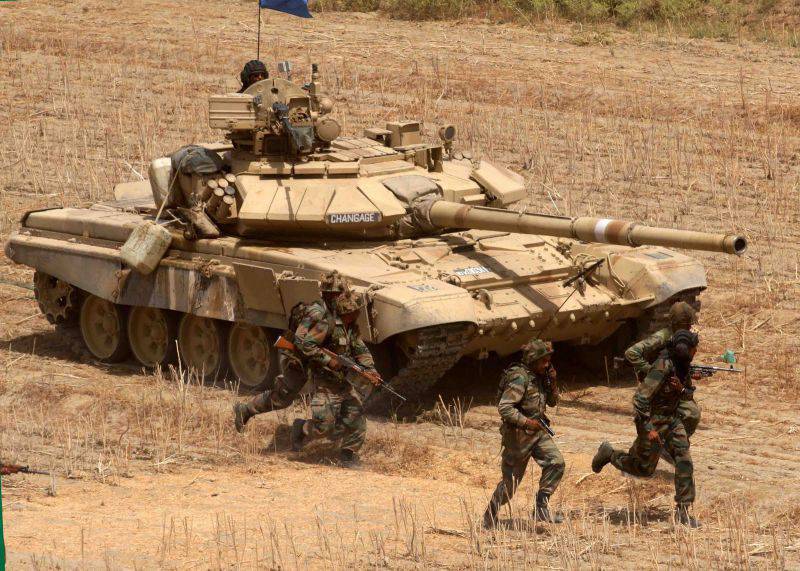
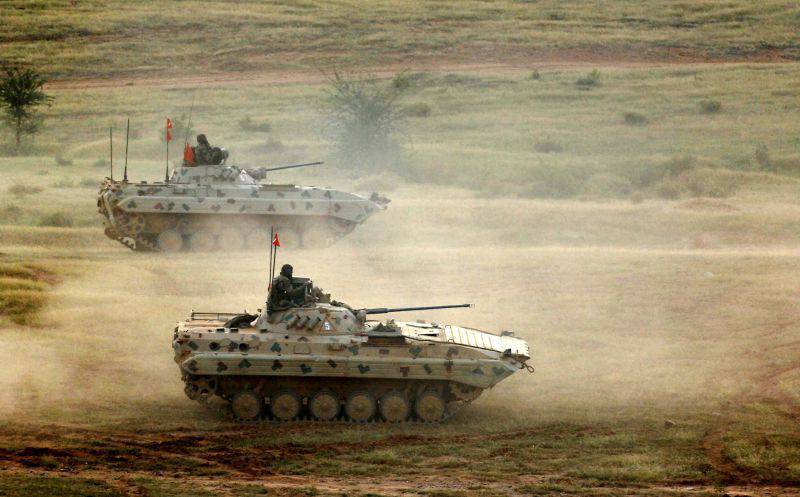
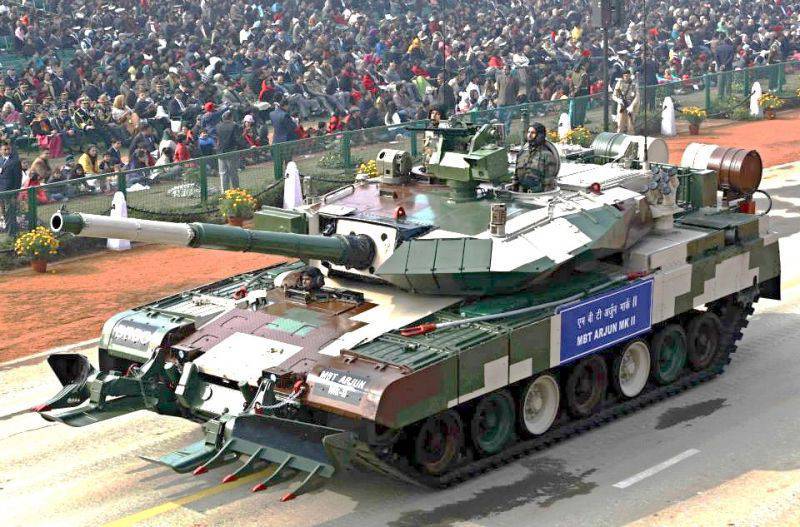

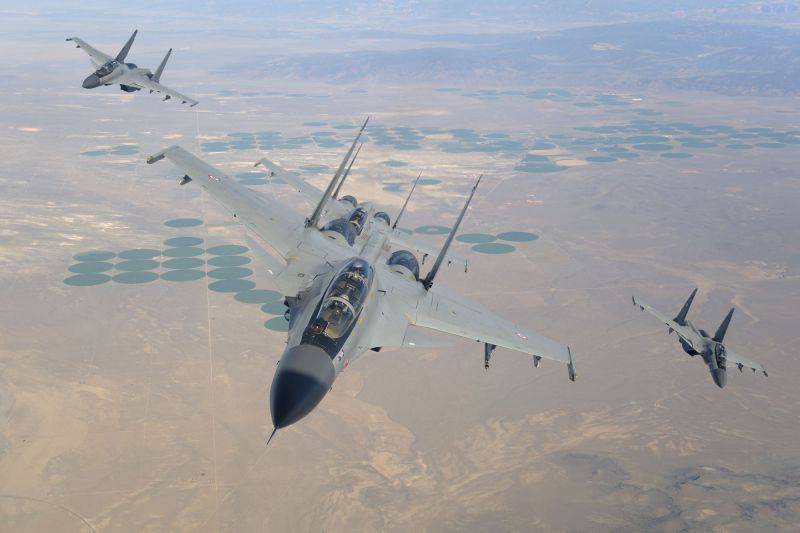
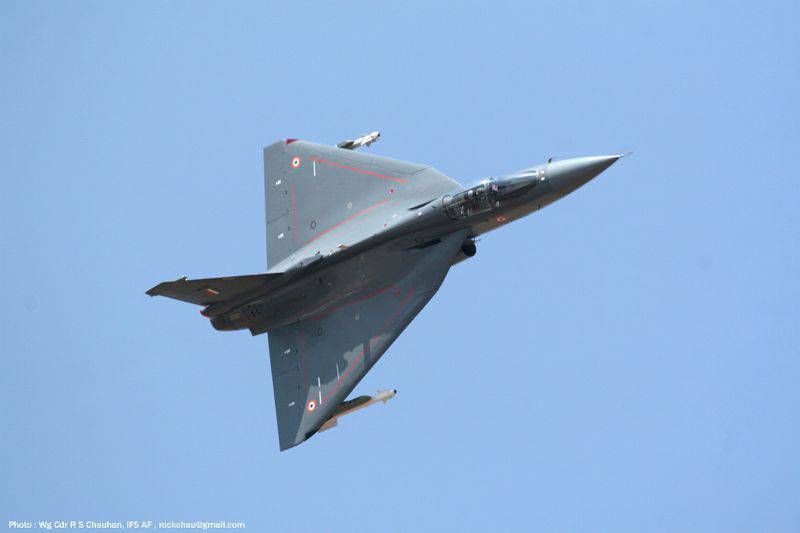
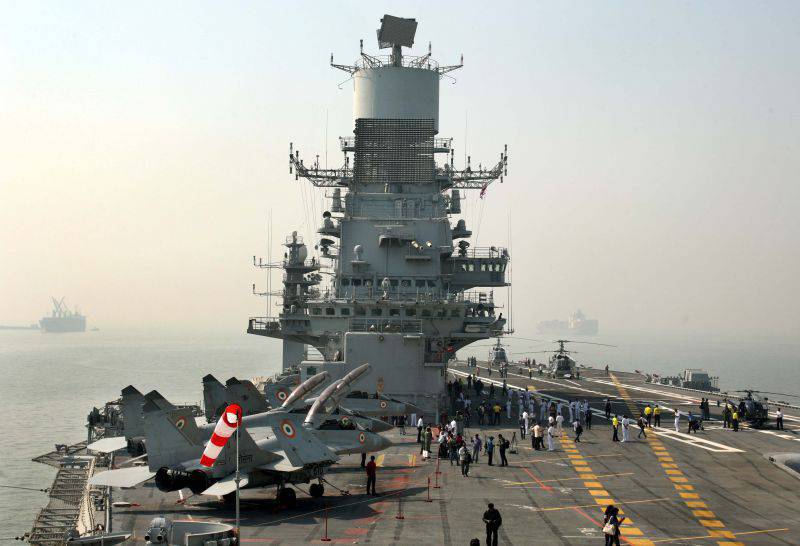
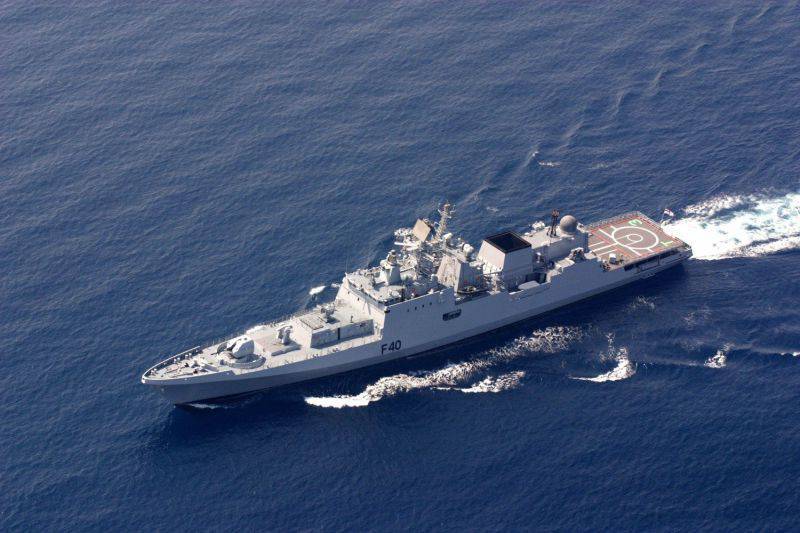
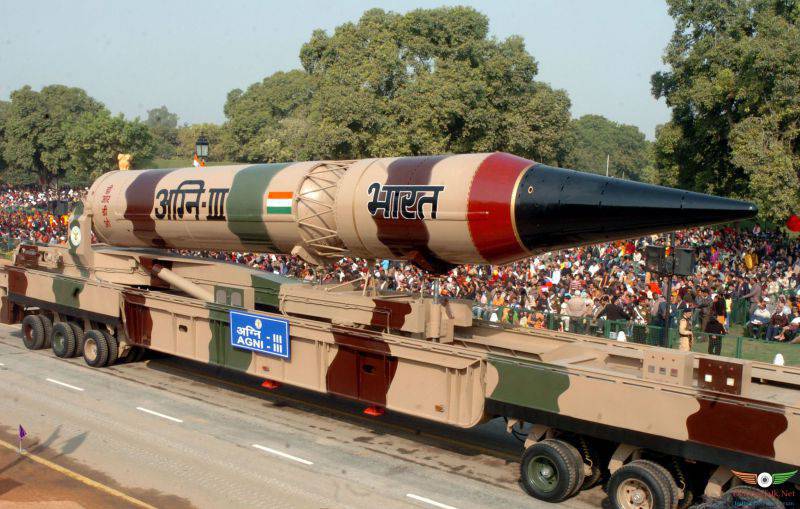
Information